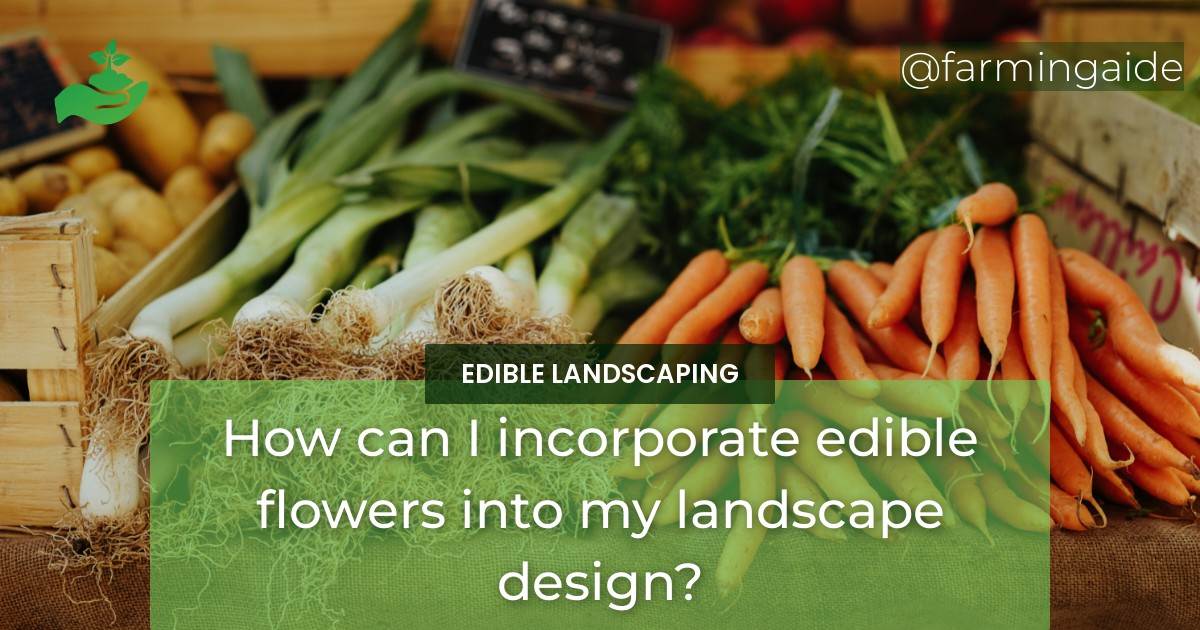If you are looking to add some color and flavor to your landscape design, incorporating edible flowers is a great way to do it. Not only do they look beautiful, but they can also be used in a variety of recipes and dishes. Here are some tips on how to incorporate edible flowers into your landscape design.
Edible Flower Varieties for Landscape Design
Annual Edible Flower Varieties
- Marigolds
- Nasturtiums
- Calendula
- Pansies
- Violas
Annual flowers are a great choice for adding a pop of color to your garden beds or containers. These edible flowers are easy to grow from seed and can be planted in the spring after the last frost. They come in a variety of colors and have a mild flavor that is perfect for salads and desserts.
Perennial Edible Flower Varieties
- Lavender
- Daylilies
- Roses
- Bee Balm
- Chamomile
Perennial flowers are a great choice for adding long-lasting color and flavor to your landscape design. These edible flowers come back year after year and require little maintenance. They have a stronger flavor than annual flowers and are perfect for infusing into teas and other beverages.
Companion Planting with Flowers
Flowers to Attract Pollinators
- Sunflowers
- Cosmos
- Zinnias
- Asters
- Coneflowers
Attracting pollinators to your garden is essential for a successful harvest. By planting these flowers alongside your vegetables and herbs, you can help to attract bees, butterflies, and other pollinators to your garden.
Flowers to Repel Pests
- Chrysanthemums
- Petunias
- Geraniums
- Lavender
- Marigolds
Using flowers to repel pests is an effective and natural way to control pests in your garden. These flowers contain natural compounds that repel pests such as aphids, whiteflies, and beetles.
ALSO READ
Edible Flower Arrangements
Using Edible Flowers in Cut Flower Arrangements
- Roses and lavender
- Pansies and violas
- Nasturtiums and calendula
- Chamomile and bee balm
Using edible flowers in cut flower arrangements is a great way to add a pop of color and flavor to your home decor. These flowers can be used in bouquets, centerpieces, and other floral arrangements.
Creating Edible Flower Centerpieces
- Floral ice cubes
- Edible flower salads
- Flower-infused cocktails
Creating edible flower centerpieces is a fun and creative way to showcase your garden harvest. These centerpieces can be used at parties, weddings, and other special occasions.
Incorporating Edible Flowers into Landscape Design
Using Edible Flowers as Borders
- Lavender borders
- Pansy borders
- Nasturtium borders
Using edible flowers as borders is a great way to add color and flavor to your landscape design. These flowers can be used to create a border around your garden beds, walkways, and other areas of your yard.
Incorporating Edible Flowers into Garden Beds
- Companion planting with edibles
- Planting edible flowers in raised garden beds
- Using edible flowers as groundcover
Incorporating edible flowers into garden beds is a great way to maximize your garden space. These flowers can be planted alongside your vegetables and herbs to add color and flavor to your harvest.
Creating Edible Flower Containers
- Planting edible flowers in pots
- Window box gardens with edible flowers
Creating edible flower containers is a great way to showcase your garden harvest on your patio or balcony. These containers can be planted with a variety of annual and perennial flowers to add color and flavor to your outdoor space.
ALSO READ
How can I design my landscape to incorporate both edible and decorative flowers?
When designing your landscape, consider incorporating a variety of edible garden flowers for both beauty and functionality. Flowers such as marigolds, pansies, and nasturtiums not only add color and visual interest to your garden but also provide a source of fresh, natural ingredients for culinary use.
Conclusion
Edible flower landscaping is a great way to add color and flavor to your landscape design. By planting a variety of edible flowers in your garden beds, containers, and other areas of your yard, you can create a beautiful and functional outdoor space that is sure to impress.
RELATED ARTICLES:


